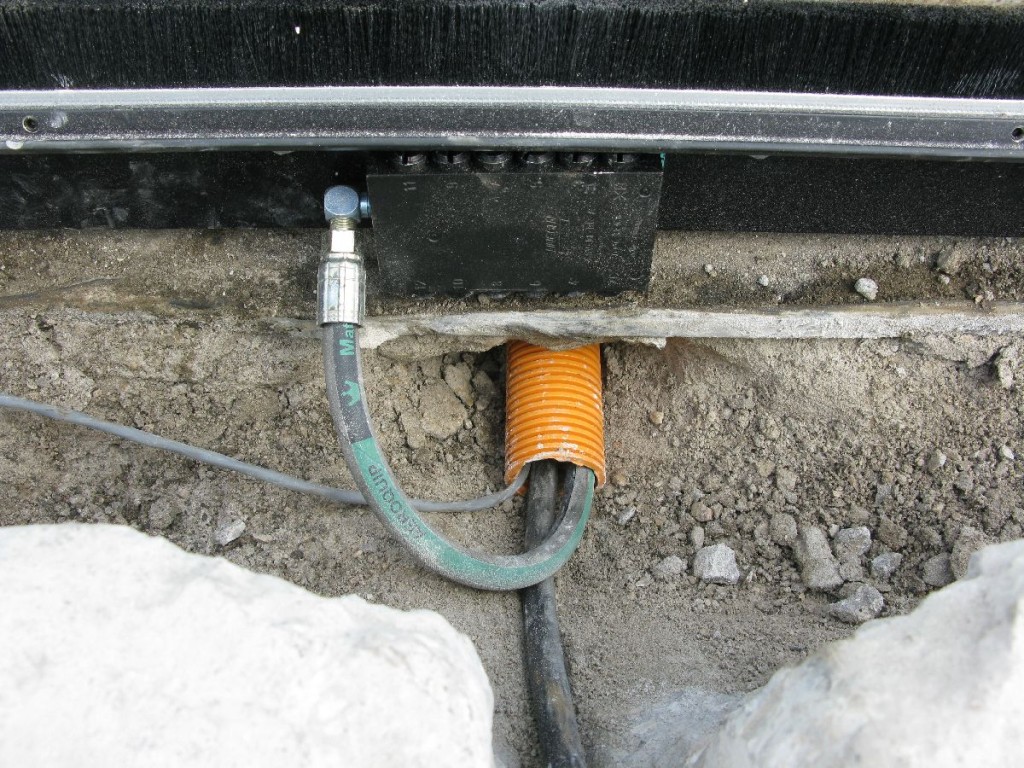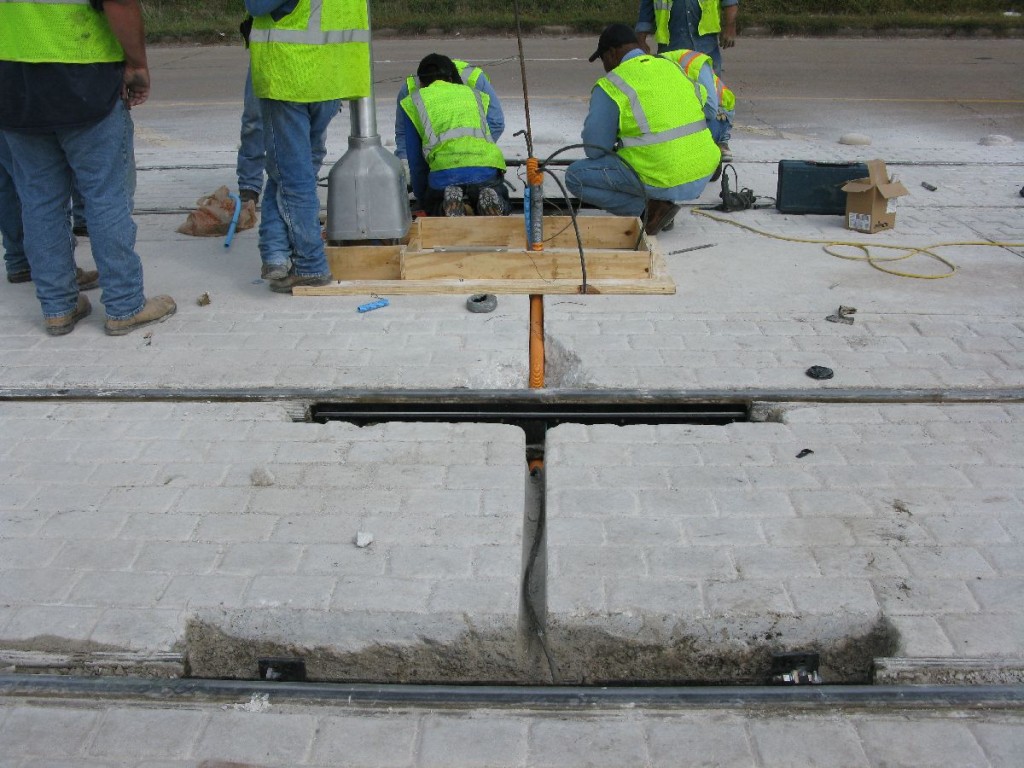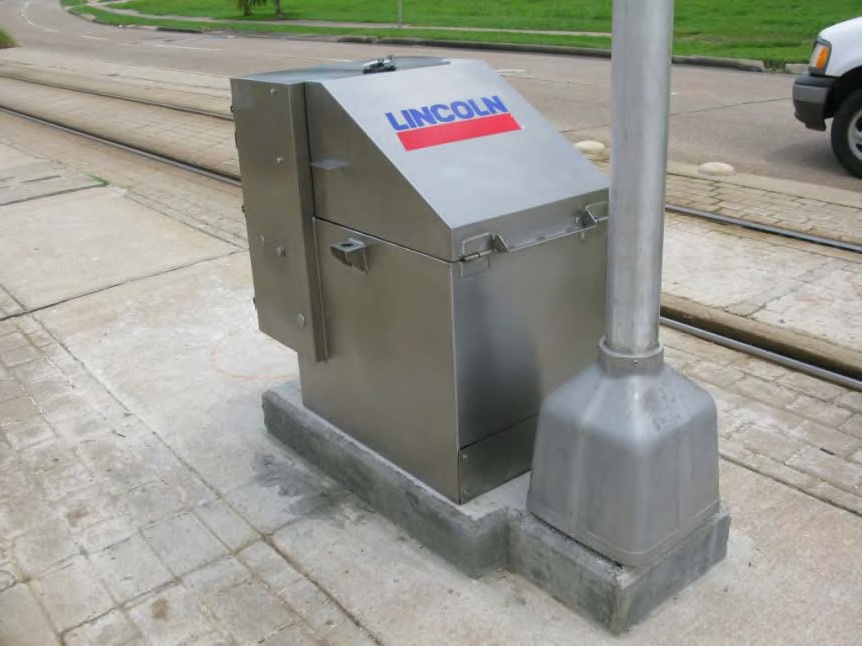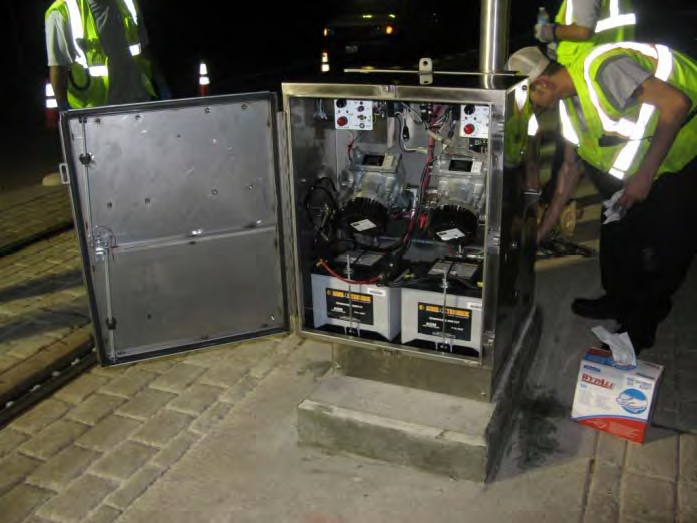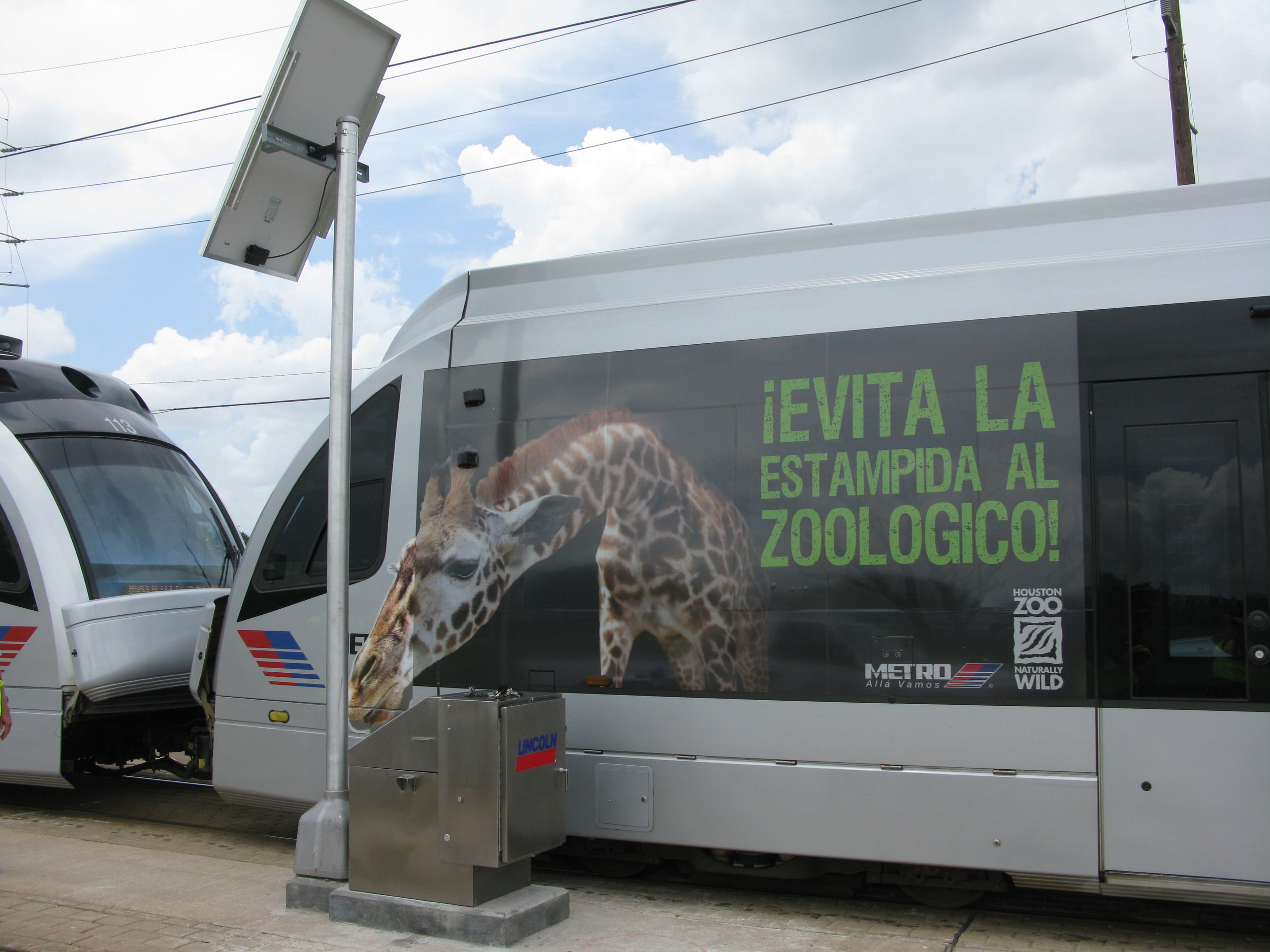Shortly after Houston completed the new metro rail project through the medical center and the outskirts of downtown, a slight controversy ensued. Because of space limitations, fitting a functional rail in a small area created very tight radius curves within the rail system. 115 pound rail with tight radiuses create wear on steel wheels and track, but most importantly create a very high decibel squeal. When a barrage of noise complaints, especially from the medical center, began surfacing, Houston MetroRail had to find a suitable remedy in order to still move people without creating a nuisance.
Lincoln Industrial had recently introduced a new railroad wayside division with a full line of wayside lubrication products. While Lincoln offered a system readily available for 115 lb. track, the system was solely for ballast track with an 800 lb reservoir. Metro had very limited ballast track with the majority of the rail embedded in concrete. Bill Spitzer and Associates and Lincoln Industrial began engineering a way to use current lubrication methods that would function with embedded track.
The first obstacle was to build a reservoir that would house Lincoln’s 24 volt Flowmaster high pressure pump along with batteries and controls, fit between the north and south railway and store enough lubricant for infrequent filling. An aesthetically appealing, vandal and pest proof, stainless steel enclosure within close tolerances was fabricated to fit between the existing rail. The 24 volt system utilizes a 200 watt solar panel mounted on galvanized poles in order to continuously charge a bank of two 12 volt high duty cycle batteries. Within the reservoir is a control panel that is capable of counting axles that pass a wheel sensor and engages the internal pump on a timed basis.
The second and most challenging problem was to incorporate the Lincoln lubrication bar in embedded concrete. Because the bar uses Lincoln’s divider valve technology which spreads even amounts of lubricant over a larger portion of the rail, we had to find a way to excavate concrete, install the bar, and commission between train schedules.
The result was the industry’s first well-designed wayside lubricator for small embedded rail in a metropolitan rail system. As new rail has been constructed, Bill Spitzer and Associates and Lincoln have provided a total of 30 lubricators that are presently eliminating noise and protecting rail and train wheels for an expanding rail system in Houston, Texas.
